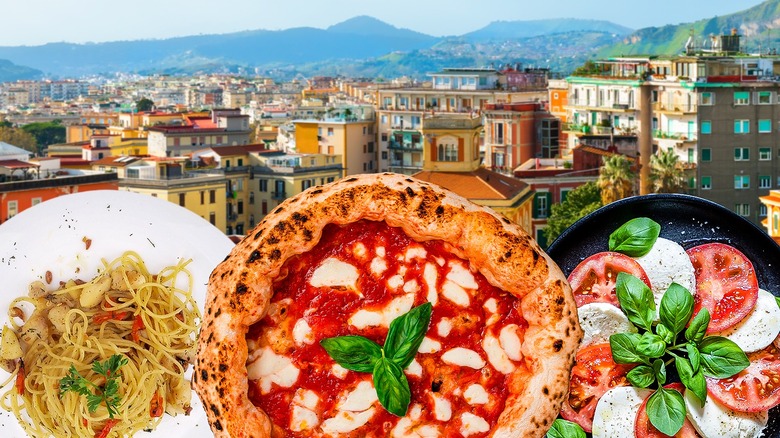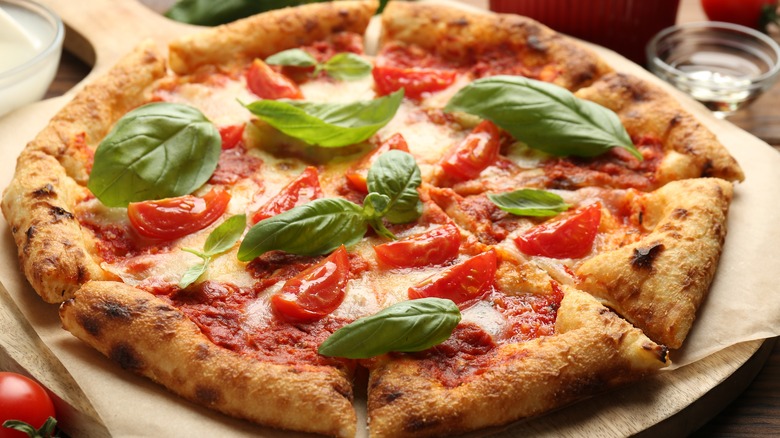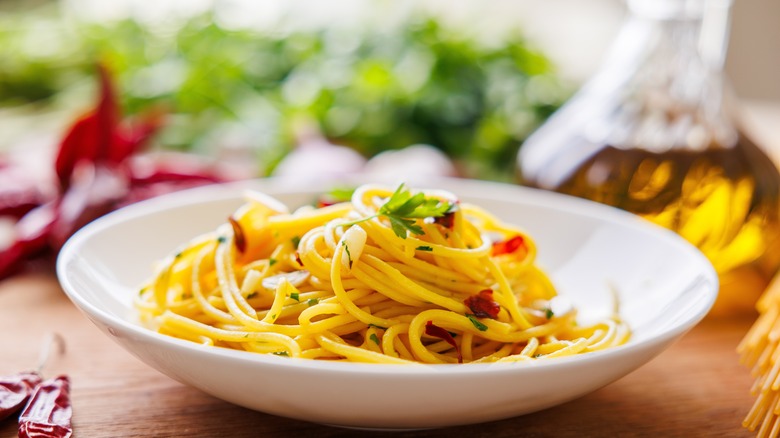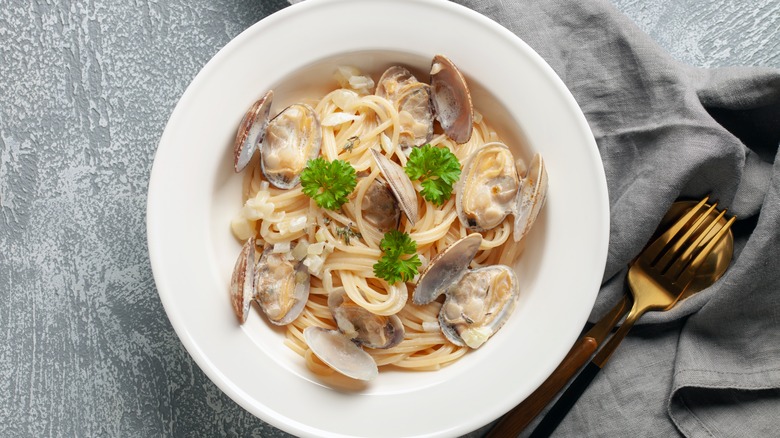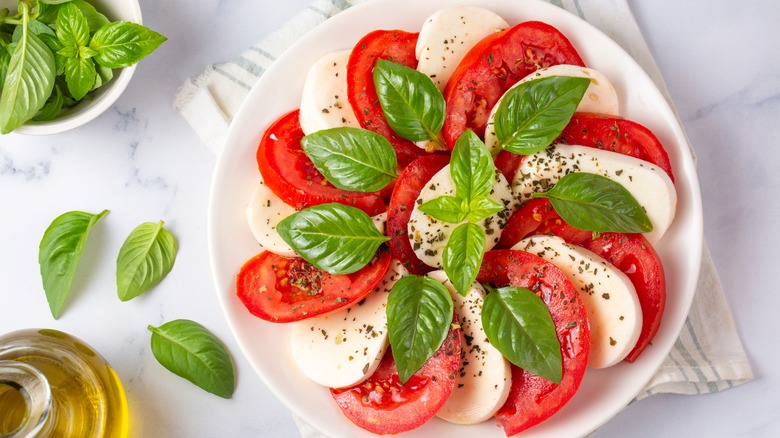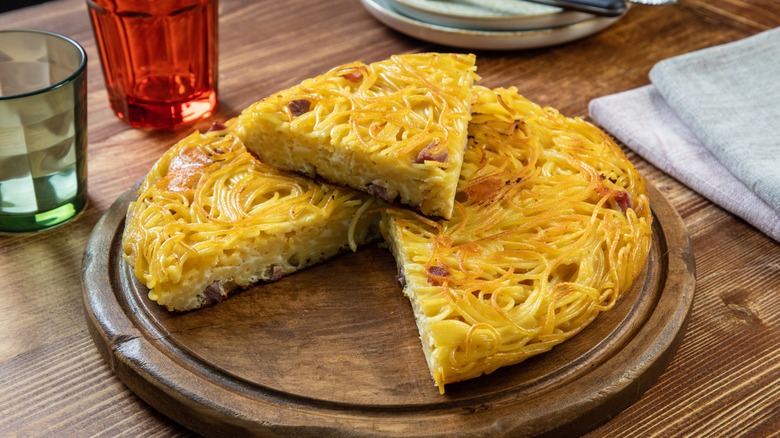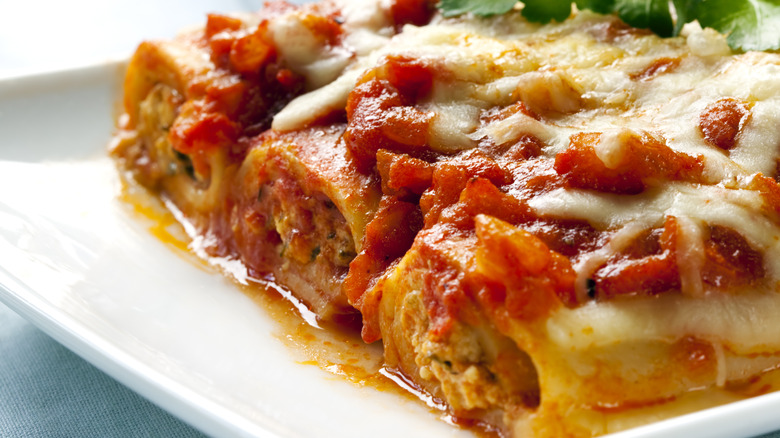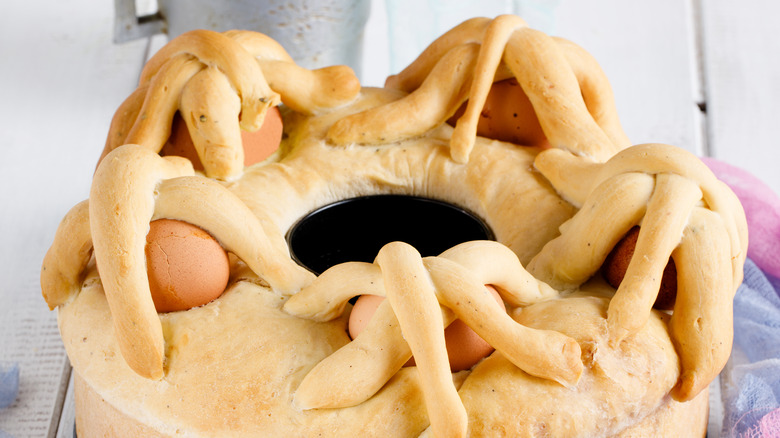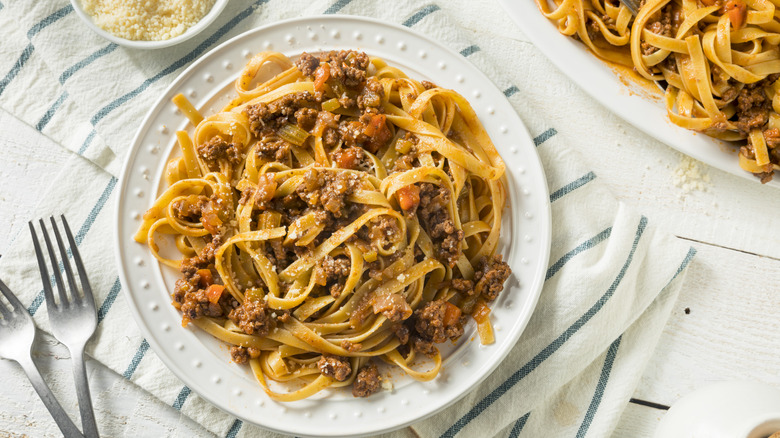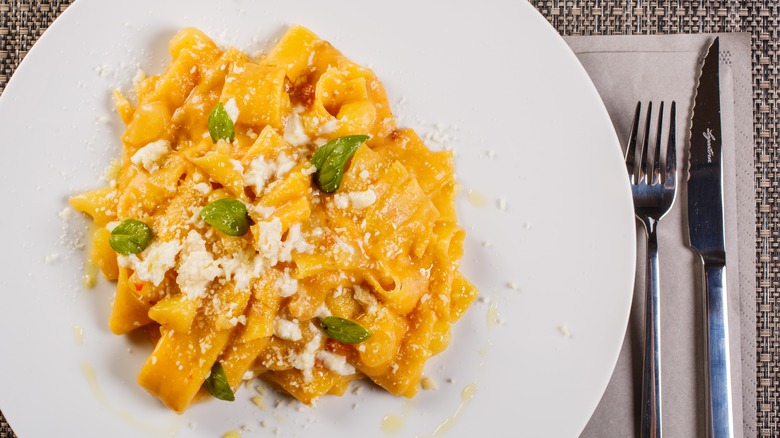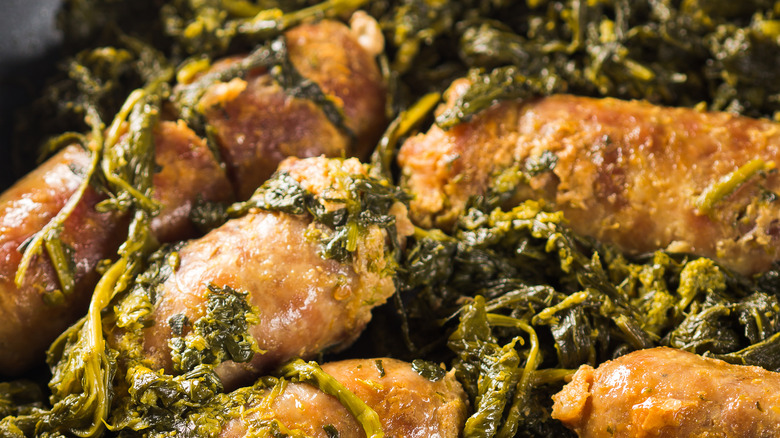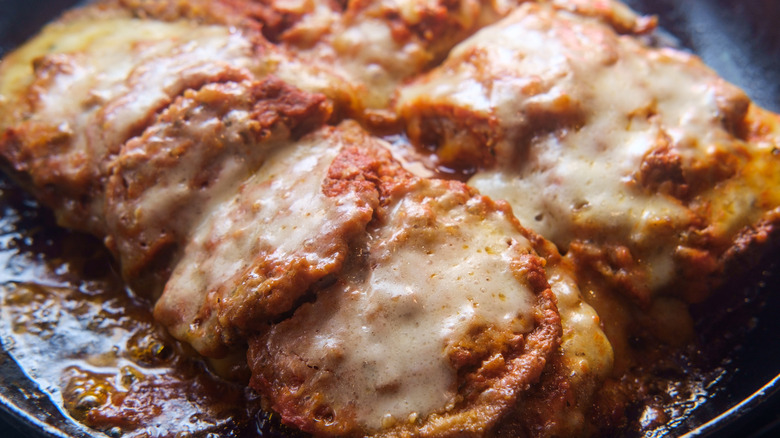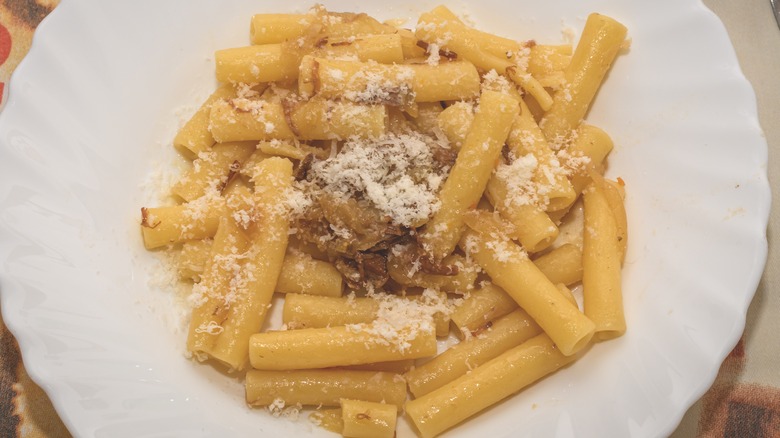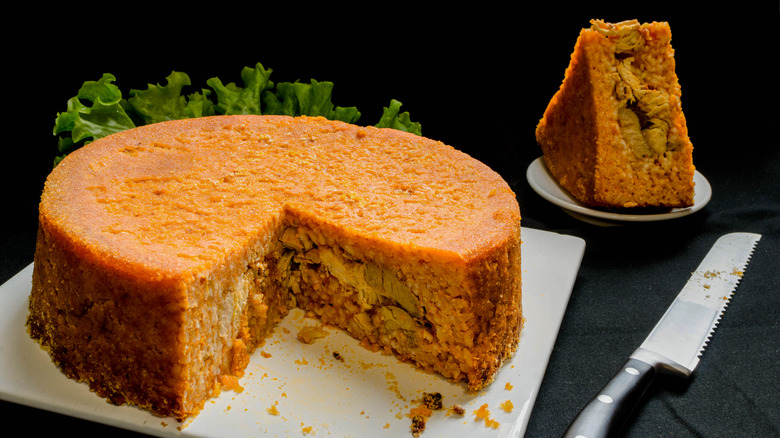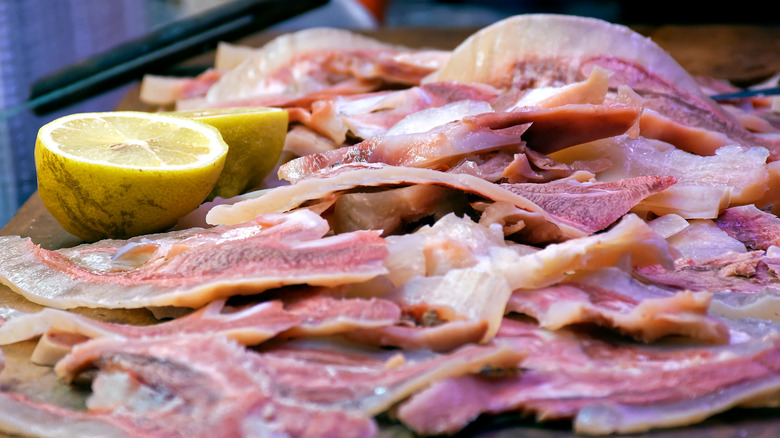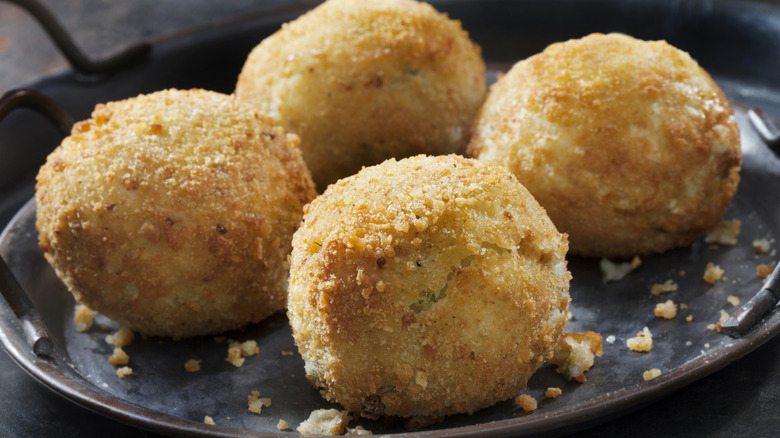17 Neapolitan Dishes You Should Try At Least Once
Each region of Italy has its own unique dishes and cooking styles, which rely on different ingredients and highlight different methods based on availability of ingredients, historical accidents, and local preferences. Neapolitan cuisine is no different. It distinguishes itself from other Italian cuisines by a heavy reliance on tomatoes (okay, all of Italy uses tomatoes, but Naples seems to more than anyone), fish fresh from the sea (Naples is historically an important port city), and other products that are widely available locally, such as olive oil (on account of olive trees growing plentiful in the south of Italy, where Naples is located), and mozzarella, which was first made near Naples.
By now you might have guessed (unless you already knew) which particular dish might be the most famous quintessential Neapolitan food based on the aforementioned ingredients: That's right, it's pizza. The very first, and simplest, pizza ever made was named the Margherita pizza, possibly in honor of Queen Margherita of Savoy. It's made with dough, tomato sauce, basil, and mozzarella and remains an all-time favorite among Neapolitans. But pizza wasn't the only famous dish Neapolitans were able to make with their local bounty. They made many exquisite appetizers, mains, and desserts, and it's high time we take a closer look at them.
Pizza Margherita
As many readers may already know, Naples is the birthplace of pizza. As the legend goes, a Neapolitan pizza maker wanted to honor Italy's Queen Margherita, and the nascent Italian state, by creating a simple food that evoked the colors of the new state flag. The creator, Raffaele Esposito, named it the Margherita. It was said that Queen Margherita had grown tired of the sophisticated French cuisine she was usually subjected to, poor thing, and longed for something simpler.
Thus simplicity was at the basis of this new dish, pizza, and was put together with nothing more than a flatbread base, tomatoes, local mozzarella, and basil. If you are old enough to read this feature, you've probably already tried some version of pizza, but you may not have tried a true Margherita. Because, mind you, while American cheese pizzas contain a similar combination of ingredients, the fresh mozzarella is what makes all the difference.
Pasta aglio e olio
Simplicity is one of the hallmarks of Neapolitan cuisine, and what could be simpler than a pasta dish made with just three ingredients? Indeed, aglio e olio only contains pasta, oil, and garlic (which is the aglio in the equation). But if that doesn't sound flavorful enough to you, think again. When the garlic is fresh, the oil is good quality, and you have the right amount of salt and pepper, you can't go wrong with this dish.
Since this dish is high in flavor and low on sauce, be sure to reserve a bit of pasta water to add to your garlic and oil mixture to make sure the ingredients have enough moisture to blend their flavors together. Also, since the garlic cloves need to be thinly sliced for this, you'll need to stand over your pan to ensure they don't burn, which can happen quite quickly with garlic. But don't worry; this won't take long.
Spaghetti alle vongole
Being a port city, Naples has always been able to rely on an abundance of fresh fish and shellfish. This is likely what led to the creation of the classic Neapolitan dish known as spaghetti alle vongole, or spaghetti with clams. As legend has it, the first dish was served on Christmas Eve (an event where fish is typically served) in 1762 at the court of Ferdinand IV of Bourbon, back when Naples was the Kingdom of Naples. The original recipe involved nothing more than pasta, clams, olive oil, garlic, parsley, and maybe some chili pepper, but today it's possible to find a "red" version, which includes a few datterini tomatoes.
But unlike many other dishes in Italy, which tend to remain localized to their point of origin, don't be surprised to find spaghetti alle vongole in other coastal towns. This dish is so popular, it has managed to transcend historical borders from before the unification of Italy and spread to any place with access to an abundance of fresh clams.
Caprese salad
As the name suggests, this salad possibly originated on the island of Capri, just off the coast south of Naples. It seems like Neapolitans were really into the whole Italian flag thing, because aside from pizza, they also invented this dish that also mimics the colors of the Italian flag: tomatoes for the red, mozzarella for the white, and basil leaves for the green. Or perhaps it's the other way around, and the Italian flag was subconsciously designed to imitate the best food combinations of the land?
Either way, a good Caprese salad is not to be missed. As long as the ingredients are fresh and of good quality — and these features are not hard to find in Naples in the summer — this salad is sure to be a hit. But bear in mind that you may need a knife to partake in this appetizer: The ingredients come sliced, but not bite-sized. Unless, of course, you prefer our own version of the Caprese salad, which comes chopped and ready to eat with just a fork.
Frittata di spaghetti
Leftover spaghetti is not all that enjoyable to eat as-is. Unless it's served fresh, straight out of the pot of boiling water, it tends to stick together, congeal, and become tough and even crunchy when heated up the next day. So if you're expecting to eat leftover pasta and like it as much as you did the first time around, you might be disappointed.
Luckily, the practical and pragmatic people of Naples have a solution for this conundrum, and it relies precisely on spaghetti becoming tough and crunchy. They call it a frittata di spaghetti, and it's a perfect way to use leftover spaghetti without having to feel like you're sacrificing yourself to poor taste by trying to avoid letting those noodles go to waste. And, as with many other Neapolitan dishes, it's simple to make: Just take that leftover pasta, mix it with eggs, cheese, bacon, butter, and milk, and fry it in olive oil until it has achieved a golden crust on both sides. Just make sure that you haven't already added some kind of sauce to that leftover pasta; this recipe will only work if the spaghetti is still plain.
Cannelloni
Cannelloni with tomato sauce and ricotta is a popular item on Italian restaurant menus in America. But you may not have known that the dish specifically originated in Naples. According to an in-depth analysis conducted by Gambero Rosso, the preeminent Italian food and restaurant publication, cannelloni as we know and love them today were invented as recently as 1910, with many iterations popping up throughout Italy around the same time.
The Neapolitan version, it is said, came about in nearby Amalfi, where they were first served in 1924 and made with ground beef, mozzarella, ricotta, and tomato sauce. Another version was made in Sorrento, in the province of Naples, by way of New York, where some initial experimentation yielded an earlier version of cannelloni in the late 1800s. This initial version was then perfected and brought to Sorrento, and differs slightly from the Amalfi cannelloni in that it also contains Parmesan and basil.
Zeppole
Naples is not only known for making fantastic mains and starters, but also a slew of fantastic, rich, and flavorful desserts. One such dessert is known as zeppole, which are similar to beignets in that they can come plain, with cream, and doused in sugar, but are made with a slightly stickier dough — which often contains ricotta — and may have a different variety of toppings available.
This dessert is said to have originated in 1837, when they were named zeppole after the Neapolitan dialect word for snake, serpula, because the original shape of zeppole resembled a coiled snake. They can be found in pastry shops around Naples all year round, but they are an especially beloved treat for the Feast of St. Joseph, celebrated in March. Typical toppings include powdered sugar and cinnamon, while common fillings may be cream or ricotta mixed with chocolate chips or candied fruit. It's also possible to find savory versions, such as zeppole filled with anchovies.
Casatiello
Right around Easter, Neapolitan kitchens are all aflutter with the preparation of casatielli, pastries that are given a shape and aesthetic designed to evoke the death of Christ on the cross and his subsequent resurrection. In particular, after the dough is rolled up and molded into a bundt pan, it is to be topped with whole eggs — shells and all — and covered by two strands of dough, which symbolize the cross. Once the pastry is fully baked, the eggs will be fully encased in it, only slightly popping out, and you'll have to take care not to bite into the shell.
The whole eggs may seem odd, but this dish has stood the test of time. Its invention is believed to go back to Greek and Roman times, before it even came to symbolize Easter (though at the time, the recipe did not include an egg ensconced in cross-shaped dough). Although modern casatielli are filled with cheese and salami, in olden times they used to fill it with whatever needed to be used up, as a sort of pantry purge.
Ragù alla napoletana
You may have heard the word ragù uttered in relation to Bolognese sauce. This denotes a type of sauce made in the Italian city of Bologna with ground beef, tomato sauce, and complementary ingredients. But in truth, the two terms don't have to go together, and often don't. Indeed, ragù is simply a name for a specific type of sauce made with meat, so there can be many different variations throughout Italy.
The variation made in Naples is called ragù alla Napoletana and includes chopped beef, sparerib meat, pork sausage, tomato sauce, onions, and red wine. This differs from the classic Bolognese style ragù in the choice of meat and the lack of celery and carrots, mainly. But as with ragù alla Bolognese, it is best paired with tagliatelle or other types of fresh pasta. Just be sure to cook the sauce for a long time, up to four hours, to ensure the meat tenderizes and the flavors blend.
Pasta, patate, e provola
This dish may not be the most famous one to come out of the land of Margherita pizza and Caprese salad, but it may be just as good, and it's been around for a least a couple of centuries. Invented in 1773, the original recipe only involved pasta and potatoes, without the addition of cheese and bacon coming about 10 years later.
At the time, potatoes grew plentiful in Southern Italy, so the tuber was cheap and easy to acquire. As a result, Neapolitans were bursting with potatoes, which had first been imported from the New World about 200 years before, and didn't know what else to do with them but add them to an ingredient they already knew and loved: pasta. And you don't have to find any fancy kind of pasta if you want to try this at home. Rather, the idea is to use whatever pasta shapes you have on hand, which makes this recipe perfect for using up bits and bobs of pasta shapes you have left over in various boxes.
Salsicce e friarielli
Sausage and friarielli, which are broccoli rabe that grow on the slopes of Vesuvius, was directly inspired by the fruits of the land. As the story goes, a street vendor wanted a side to serve with his pork sausage. He spotted the broccoli rabe growing on the mountainside, which hadn't been consumed much on account of the bitter flavor of the leaves, and decided to partake. This was a good decision, because when fried with some garlic and oil, these greens turned out to be a real treat.
To prepare this dish, simply cook the sausage in white wine and prepare the broccoli separately for the first half of the process, before bringing them together before the end, so the flavors have time to blend together. The idea is to keep this dish simple, but it's not a bad idea to add a touch of hot pepper flakes to the broccoli for a bit of extra bite.
Eggplant Parmesan
With some Italian dishes, it's hard to determine exactly which region invented the first iteration. Indeed, Sicily, Emilia-Romagna, and Campania, the region in which Naples is located, all claim to have invented eggplant Parmesan. The thing, is they're all correct; it's just that each of these regions can boast its own version of the dish.
But to be clear, the version that is most widely known in the U.S. closely resembles the Neapolitan eggplant Parmesan, which includes mozzarella (a Neapolitan addition), and slices of eggplant that are first dipped in egg and a breadcrumb mixture before being fried, unlike in Sicily, for example, where the eggplant slices are directly thrown into the hot oil without any accoutrements. This dish has been a Neapolitan mainstay since the 1700s, when it was initially made with zucchini. Only later, in the 1800s, did the use of eggplant become the preferred choice.
Pasta alla Genovese
With a name like that, it sounds like this dish was invented in Genova, the birthplace of most foods ending in "alla Genovese," like pesto. But don't be fooled. This is a Neapolitan dish through and through. Although the origins of the name remain disputed, it is believed to have been first prepared by someone who was either from Naples — but who bore the nickname "the Genovese" — or Genoa (another big port city back in the day).
The dish is essentially another pasta meal made with a ragù, but this one has no tomatoes and instead comprises diced beef, carrots, celery, white wine, and lots of onions. Legend says that this dish first manifested in the form of a layered lasagna, but it mostly appears today as a simple pasta sauce served over ziti. Another interesting thing to note is that the Genovese sauce and ragù alla Napoletana started out as very similar sauces, which gradually became very different over time, as the Neapolitan one used tomatoes and the Genovese one doubled down on the onions.
Sartù di riso
Pasta may be the preeminent carb of Naples, but there are also a number of dishes where rice reigns supreme. One such dish is the sartù di riso, a food that resembles a timbale but is made with rice, meat sauce, hard boiled eggs, and peas, all topped with breadcrumbs and meatballs. The name comes from the Neapolitan words sor tout, which means cover everything, and which refers to how the rice cake is covered in breadcrumbs and meatballs.
The dish debuted in the 18th century at court, when Ferdinand IV, King of the Two Sicilies, ruled with his wife, Maria Carolina of Austria. Since the queen didn't much appreciate Neapolitan food, she had French chefs shipped in from France, and unlike the locals, who were averse to using rice at court because it was deemed tasteless and only good for treating digestive issues, the French chefs had no such compunction.
Baccalà alla Napoletana
Dishes made with baccalà, or salted cod, abound in the northern regions of Italy, often in white sauce with lots of cheese. But as it turns out, Naples can also claim a delicious baccalà dish known, of course, as baccalà alla Napoletana. This version braises the cod and then surrounds it with a briny sauce made with tomatoes, capers, olives and dried oregano.
The best way to make this dish is to salt your own cod, especially if you don't live in Italy, where most grocery stores are prepared with perfectly sized and seasoned cod filets intended precisely for the making of a baccalà dish. Salting the fish yourself at home will help you better control the salt levels, which can sometimes be too high in store-bought salted cod. The risk is that overly salty cod will combine with the briny sauce to create a salt bomb of a meal.
O' per e o' muss
You might not be able to pronounce the name of this dish, but that doesn't mean you can't enjoy it. The words mean "the foot and the face" in Neapolitan dialect, and refer to the parts of the cow that are contained in this street food. As you can imagine, these offal bits were traditionally seen as food for the poor, who would gather them from below the windows of rich folk after they tossed the parts of the cow they didn't want out the window.
When o' per e o'muss is served today, the ingredients are probably quite clean and not gathered off some street corner. You may find it chopped up and paired with salt and lemon. Or it may appear as a topping for a salad with olive, celery, onion, and tomato. If you find it at all. Indeed, this street food is sadly in decline, along with the popularity of offal, but it is still sold in markets or food trucks here and there throughout the city.
Potato crocchè
This type of food is widespread in Italy, but Spain and France can also claim their own versions. That said, Naples has a specific way of preparing these bites, which it calls crocchè, or panzarotti. Unlike some other croquettes, which may contain mostly cheese, these are filled with potatoes combined with eggs and seasoning and stuffed with mozzarella. This concoction is then covered in breadcrumbs and fried.
This cheesy, carby delight is considered a street food and can be easily enjoyed as finger food. But if you're trying these at home, be sure to select the right type of potato for the filling. You want something starchy, like russet potatoes, and avoid the waxy kind. Meanwhile, be sure to boil the potatoes with the skin on –- this will keep them from getting too watery, which would not do at all or the whole croquette will fall apart.
